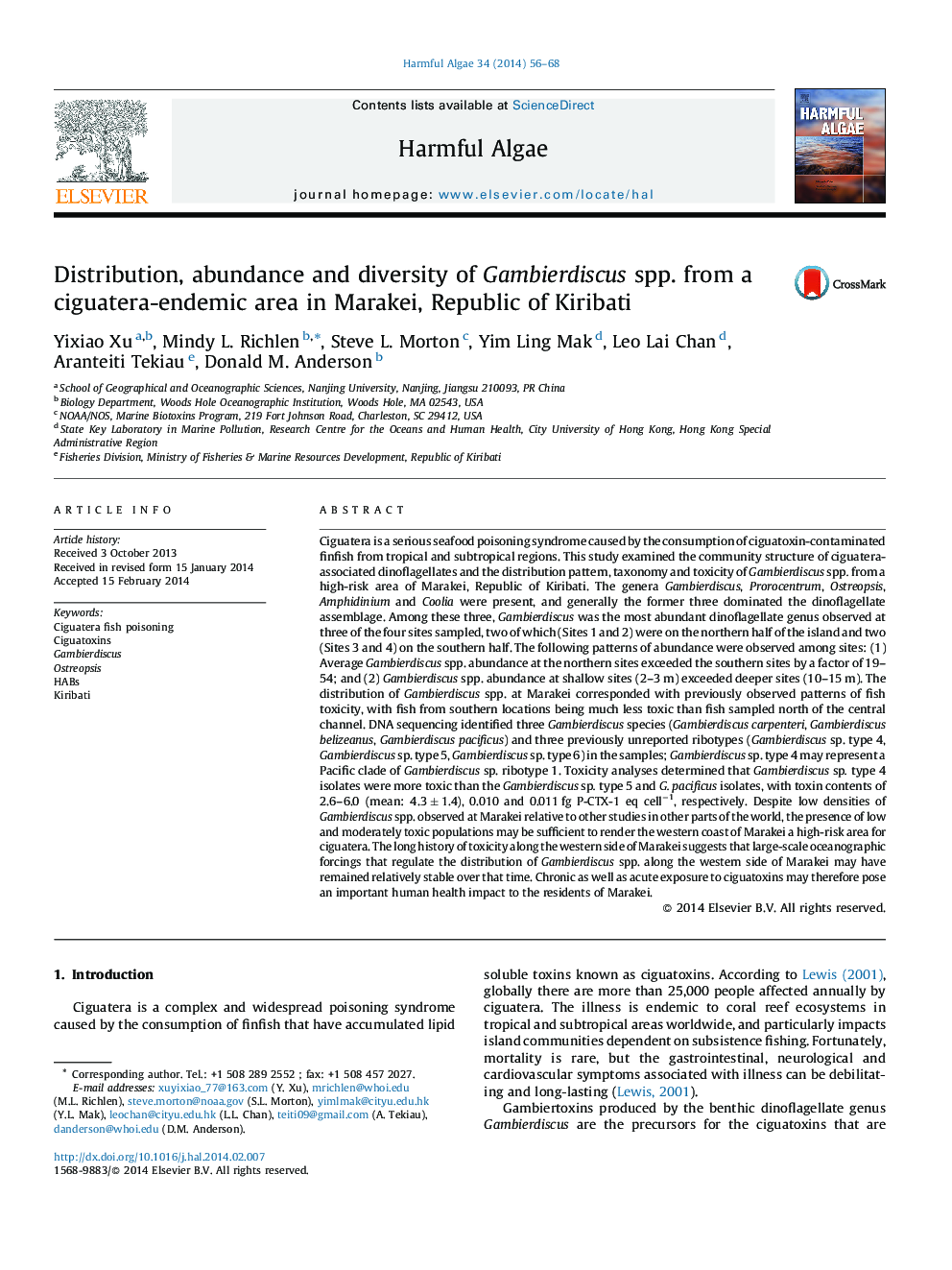| کد مقاله | کد نشریه | سال انتشار | مقاله انگلیسی | نسخه تمام متن |
|---|---|---|---|---|
| 4545405 | 1626937 | 2014 | 13 صفحه PDF | دانلود رایگان |

• Genetic and morphological analysis identified three Gambierdiscus species and three previously unreported ribotypes from Marakei, Republic of Kiribati.
• All Gambierdiscus isolates tested exhibited low or moderate ciguatoxin-like content.
• Gambierdiscus distribution patterns corresponded with previous patterns of fish toxicity.
Ciguatera is a serious seafood poisoning syndrome caused by the consumption of ciguatoxin-contaminated finfish from tropical and subtropical regions. This study examined the community structure of ciguatera-associated dinoflagellates and the distribution pattern, taxonomy and toxicity of Gambierdiscus spp. from a high-risk area of Marakei, Republic of Kiribati. The genera Gambierdiscus, Prorocentrum, Ostreopsis, Amphidinium and Coolia were present, and generally the former three dominated the dinoflagellate assemblage. Among these three, Gambierdiscus was the most abundant dinoflagellate genus observed at three of the four sites sampled, two of which (Sites 1 and 2) were on the northern half of the island and two (Sites 3 and 4) on the southern half. The following patterns of abundance were observed among sites: (1) Average Gambierdiscus spp. abundance at the northern sites exceeded the southern sites by a factor of 19–54; and (2) Gambierdiscus spp. abundance at shallow sites (2–3 m) exceeded deeper sites (10–15 m). The distribution of Gambierdiscus spp. at Marakei corresponded with previously observed patterns of fish toxicity, with fish from southern locations being much less toxic than fish sampled north of the central channel. DNA sequencing identified three Gambierdiscus species (Gambierdiscus carpenteri, Gambierdiscus belizeanus, Gambierdiscus pacificus) and three previously unreported ribotypes (Gambierdiscus sp. type 4, Gambierdiscus sp. type 5, Gambierdiscus sp. type 6) in the samples; Gambierdiscus sp. type 4 may represent a Pacific clade of Gambierdiscus sp. ribotype 1. Toxicity analyses determined that Gambierdiscus sp. type 4 isolates were more toxic than the Gambierdiscus sp. type 5 and G. pacificus isolates, with toxin contents of 2.6–6.0 (mean: 4.3 ± 1.4), 0.010 and 0.011 fg P-CTX-1 eq cell−1, respectively. Despite low densities of Gambierdiscus spp. observed at Marakei relative to other studies in other parts of the world, the presence of low and moderately toxic populations may be sufficient to render the western coast of Marakei a high-risk area for ciguatera. The long history of toxicity along the western side of Marakei suggests that large-scale oceanographic forcings that regulate the distribution of Gambierdiscus spp. along the western side of Marakei may have remained relatively stable over that time. Chronic as well as acute exposure to ciguatoxins may therefore pose an important human health impact to the residents of Marakei.
Journal: Harmful Algae - Volume 34, April 2014, Pages 56–68